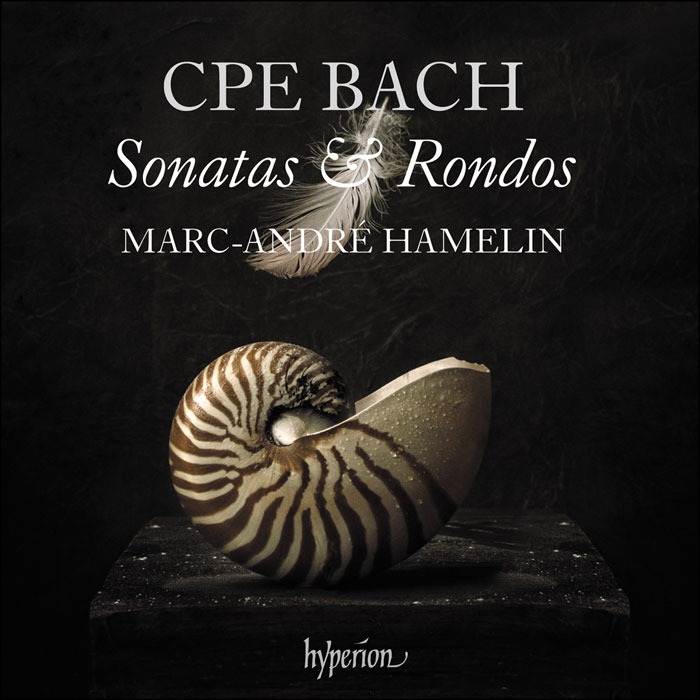search
date/time
 | North East Post A Voice of the Free Press |

Andrew Palmer
Group Editor
4:00 AM 3rd January 2022
arts
Classical Music Album Review: CPE Bach Sonatas & Rondos Marc-Andre Hamelin
CPE Bach Sonatas & Rondos
Marc-Andre Hamelin
Sonata in A minor H247; Rondo in E major H265; Fantasia in C major H291; Sonata in E minor H66; Abschied von meinem Silbermannischen Claviere, in einem Rondo H272; Arioso with 9 variations in C major H259; March in G major BWVAnh124; Solfeggio in C minor; Rondo on C minor H283; Sonata in F minor H173; L’Aly Rupalich H95; Sonata in D major H286; Sonata in A flat major H31; Rondo in B flat major H267; Sonata in E minor H281; La complaisante H109;Tondo in E major H274; Freie Fantasie furs Clavier in F sharp minor H300; L’Herrmann H92; La Prinzette H91
Hyperion CDA68381/2
Recorded in Mechanics Hall, Worcester Massachusetts on Steinway & Sons piano.
www.hyperion-records.co.uk/
Available as an MP3, iTunes, CD or FLAC and ALAC formats
Marc-Andre Hamelin
Sonata in A minor H247; Rondo in E major H265; Fantasia in C major H291; Sonata in E minor H66; Abschied von meinem Silbermannischen Claviere, in einem Rondo H272; Arioso with 9 variations in C major H259; March in G major BWVAnh124; Solfeggio in C minor; Rondo on C minor H283; Sonata in F minor H173; L’Aly Rupalich H95; Sonata in D major H286; Sonata in A flat major H31; Rondo in B flat major H267; Sonata in E minor H281; La complaisante H109;Tondo in E major H274; Freie Fantasie furs Clavier in F sharp minor H300; L’Herrmann H92; La Prinzette H91
Hyperion CDA68381/2
Recorded in Mechanics Hall, Worcester Massachusetts on Steinway & Sons piano.
www.hyperion-records.co.uk/
Available as an MP3, iTunes, CD or FLAC and ALAC formats

CPE Bach was the middle son of Johann Sebastian and Mahan Esfahani writes that his outstanding achievement was his Essay on the True Art of Playing Keyboard Instruments (1753), a compendium of practically all the technical precepts of the music of his time and a detailed guide to the art of the keyboardist as a soloist, accompanist, and improviser. Haydn called it the ‘school of schools,’ and no less than Beethoven himself used the treatise.
The different moods this engrossing repertoire requires is demonstrated to perfection by Hamelin’s technical brilliance. The lightness of touch, the tenderness, sensitivity and elan, creates an aural narrative produced by performer and his instrument. He brings out the character of each of the pieces in an engaging way, drawing the listener into his aural landscape full of colour. Hamelin’s flair for artistic interpretation shines through. Nothing is rushed and the pauses and the delicate way he plays the ornamentations and flourishes add to the ambiance.
The four works concluding the first part of this recital represent the expressive world of the clavichord, Emanuel Bach’s favourite instrument and the one on which he excelled most as a performer. The ‘Farewell to my Clavier built by Silbermann’ is delightfully played and despite its shortness, at 1:22, the G major march (BWVAnh124), is captivating. It’s attributed in the nineteenth century to his father, is one of the younger Bach’s earliest surviving works and endures by having been written into the famous notebook for his stepmother Anna Magdalen.
There is no doubt that Emanuel Bach was a craftsman of the highest order. And so is Marc-Andrew Hamelin, who has immersed himself into the music understanding all the intricacies and technical demands made on both hands.
In the accompanying notes, Esfahani writes: the gift of making the keyboard ‘speak’ was prized by CPE Bach’s contemporaries, not least of all the poet F G Klopstock, who eulogized the middle Bach son.
In this superlative recording Hamelin has demonstrated he too, has the gift in making the keyboard ‘speak’ with beauty and elegance.